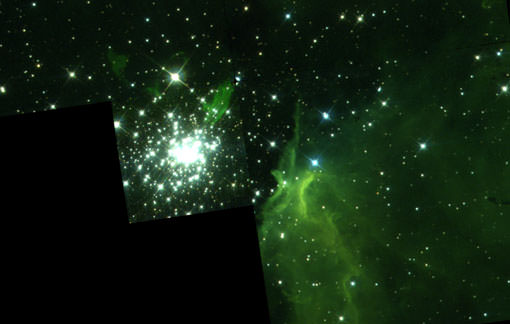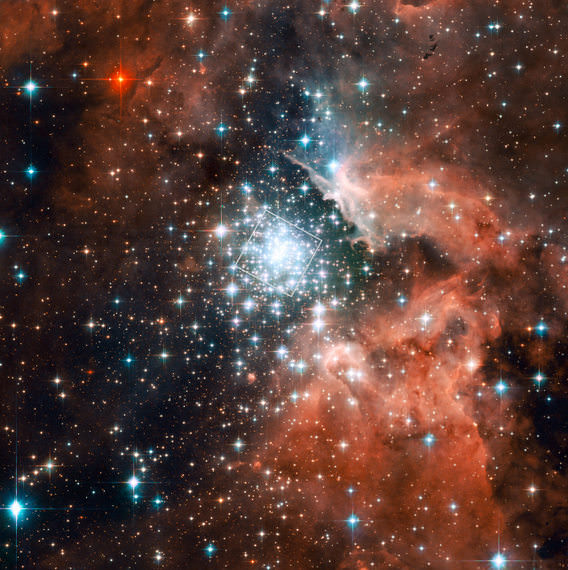[/caption]
Using the Hubble Space Telescope, astronomers from the Max Planck Institute for Astronomy made two observations ten years apart of the giant nebula NGC 3603 and found a surprising amount of movement and unrest in one of the most massive young star clusters in the Milky Way. The comparison images reveal several hundred stars continued to move for about 1 million years after the star cluster’s formation, with stellar motion not having “settled down” as expected. This new finding is at odds with current models of how such clusters evolve, and may force astronomers to rethink how star clusters form and develop.
While ordinary star clusters disperse over time as the different stars go their own separate ways, it was thought that very massive and compact clusters were different, and that they formed massive aggregations of stars known as globular clusters, whose tightly-packed stars remain gravitationally bound to each other for billions of years.
Conventional thinking was that stars with lower mass should move faster, and those with higher mass should move more slowly. But a team led by Wolfgang Brander, making high precision observations, found the stars in NGC 3603 are still moving at rates that are independent of their mass.
They found that all of the stars move at about the same average speed of 4.5 km/s (corresponding to a change in apparent position of a mere 140 micro-arc seconds per year). The average speed does not appear to vary with mass at all.
The team observed more than 800 stars and were able to obtain sufficiently precise speed measurements for 234 cluster stars of different masses and surface temperatures.

“Once our analysis was completed, we reached a precision of 27 millionths of an arc second per year,” said Boyke Rochau, the paper’s lead author. “Imagine you are in Bremen, observing an object that is located in Vienna. Now the object moves sideways by the breadth of a human hair. That’s a change in apparent position of about 27 millionths of an arc second.”
Apparently – and surprisingly – this very massive star cluster has not yet settled down. Instead, the stars’ velocities still reflect conditions from the time the cluster was formed, approximately one million years ago.
“For the first time, we have been able to measure precise stellar motions in such a compact young star cluster. This is key information for astronomers trying to understand how such clusters are formed, and how they evolve,” said team member Andrea Stolte from the University of Cologne.
Vexingly, the question of whether or not the massive young cluster in NGC 3603 will become a globular cluster remains open. Given the new results, it all depends on the speeds of the low-mass stars, which were too faint to allow for precise speed measurements with the Hubble Space Telescope. “To find out whether or not our star cluster will disperse, we will need to wait for the next generation of telescopes, such as the James Webb Space Telescope (JWST) or ESO’s European Extremely Large Telescope (E-ELT),” said Brandner.
The results have been published in the Letters section of the Astrophysical Journal. Read the paper here.
Sources: Max Planck Institute for Astronomy, Hubble ESA

